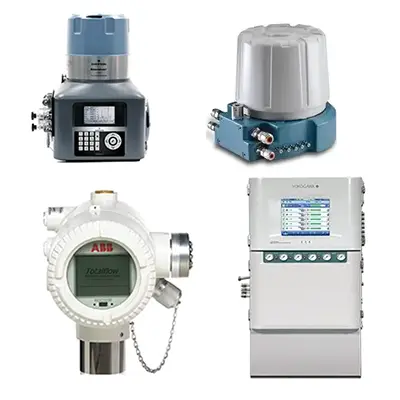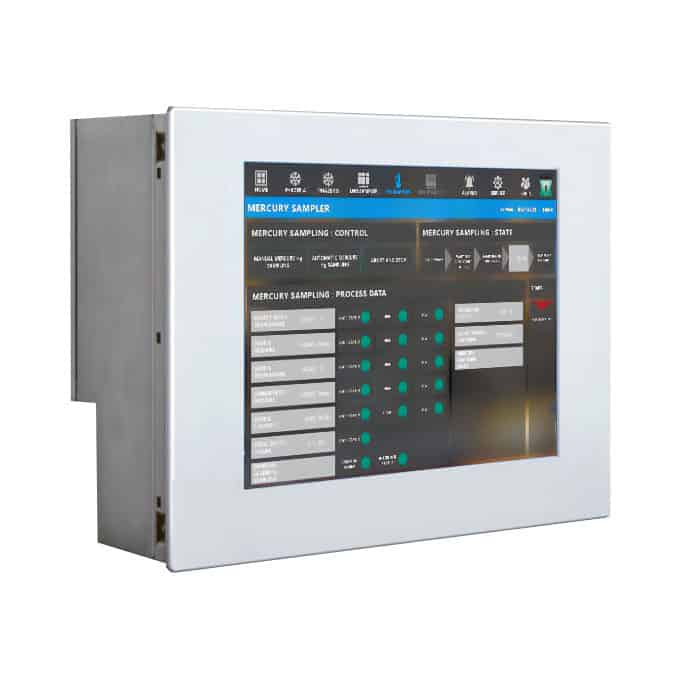Table of contents
ASaP products and services for LNG vaporization
Our range of products and services for LNG vaporization include offshore and onsite service, and an extensive selection of gas analysis instruments, sample conditioning systems, sample probes, and various cabinets and houses, made to meet the requirements for industrial applications.

Time is money! The need for an LNG vaporizer that minimizes LNG transfer time
Time is money! Every hour an LNG carrier can sail away earlier from a FSRU, will have a significant positive financial impact. So, it is important that an LNG FSRU can always operate at its maximum flow rate to minimize transfer time. Consequently, the sampling pressure at the cross-over manifold at the FSRU ‘s will be at its minimum, in practice it can be lower than 1 barg.
The sampling for LNG custody transfer is done by means of an LNG vaporizer and sample probe connected to a sample container and on-line analyzer. The location of the sampling point(s) is at the cross-over manifold. Nearly all analytical sampling systems until now operated at pressures above 2,5 barg.
The Phazer LNG vaporizer and sample probe, is as the name implies a combined LNG vaporizer with a sampling probe for direct mounting on the transfer line. The Phazer operates at any LNG pressure and vaporized samples allowing analysis with the lowest uncertainty. It has proven its outstanding performance at LNG pressures of 0,1 barg at tests and during ship-to-ship transfers. The total measurement (LNG vaporizer, LNG Sampler and analyzer) standard deviation during the ship-to-ship was just 0,0019 MJ/Nm3!
The Catch-22 is: lose money on waiting time of the LNG carrier (increase the pressure by squeezing flow), or lose money on inaccurate LNG analysis?
Guaranteed LNG vaporization results
- The Phazer conforms to ISO 8943:2007 and surpasses NEN-EN 12838:2000.
- The Phazer minimizes LNG transfer time at FSRU’s.
- The Phazer is available in a wide array of models to suit your (process) specific needs.
- The Phazer has no moving parts.
- The Phazer provides accurate and representative LNG samples from 0,1 barg.

Design of our LNG vaporizer and probe
The Phazer LNG Probe-Vaporizer conforms to ISO 8943:2007 and surpasses NEN-EN 12838:2000. Your LNG measurement is only as accurate as your provided sample…
- Conforms to ISO 8943:2007 and surpasses NEN-EN 12838:2000.
- Close-coupled to process LNG transfer line.
- Flash vaporization.
- Integrated Zero Dead Volume Accumulator™
- Homogenized sample.
- Surpasses NEN-EN 12838: 2000
- Simple installation.
- Small footprint.
- 100 x 20 cm (40” x 8”).
- approximately 50 kg (110 lb).
- Low weight.
- Direct installation on LNG transfer line.
- Minimize EPC, SI and installation effort.
- No moving parts.
- Low to high sample pressure.
- Low duty cycle LNG vaporizer.
- Practically maintenance free.
- Bare minimum of spare parts required.
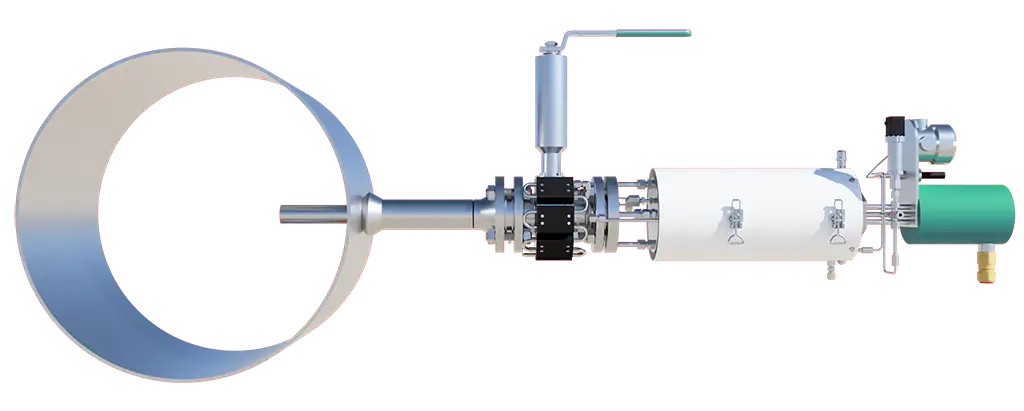

LNG vaporization project satisfied customer
“At the request of ASaP this letter may serve as reference.
It is the most advanced design which is currently commercially available on the market. It is the only LNG vaporizer and sampling system which take care for a subcooling of the sample before vaporization. The flange connection avoids any unnecessary heat leak on the sample transfer to the LNG vaporizer system. Due to the flexible design on the orifice and heater system, the flow can be easily adjusted to the process requirements as well as to the required flow rate to overcome the natural heat input to the sample.
There are no moving parts, and it is flexible in configuration. Installation work on site is expected to be kept to a minimum. Operational and maintenance costs are predicted to be minimal. The ASaP solution appears to be the perfect match for a happy customer from the Middle East with regards to technical requirements, flexibility and planning. A return on investment of 1 to 2 weeks is predicted.
The functionality of the system was tested, and the outcome is above expectation. Even without proper insulation on the transfer part, the contact temperature on the bottom part (close to the hot section) was found to be below -150°).”
– Quote from the Factory Acceptance Test (FAT)
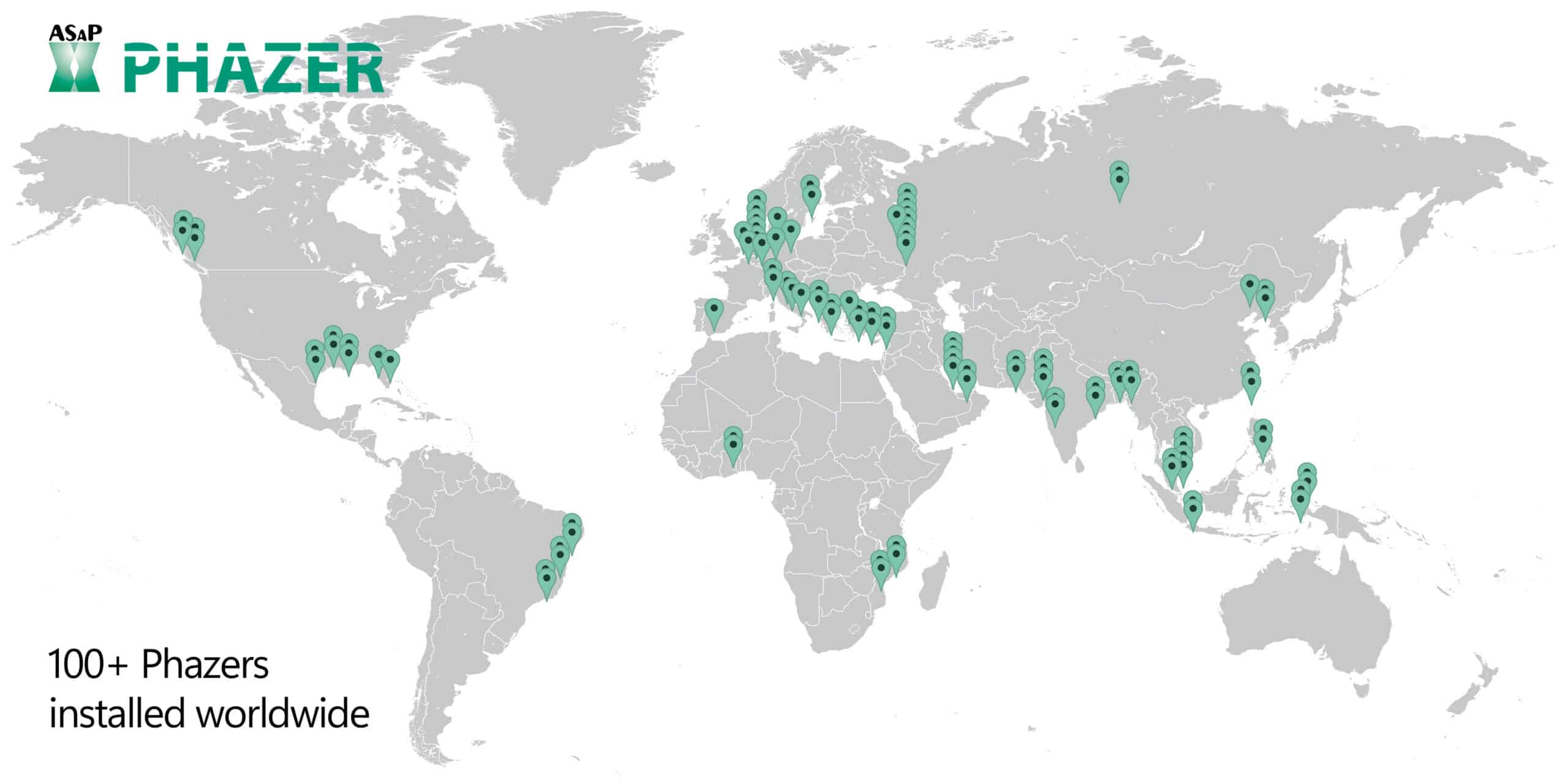
Recent LNG vaporization projects
LNG CTMS for industry leaders
LNG CTMS for industry leaders-Last week, Analytical Solutions and Products BV successfully conducted a Factory Acceptance Test for two LNG Custody Transfer Measurement Systems, in collaboration with Emerson’s Automation Technologies & Solutions, Bechtel Oil, Gas, & Chemicals, and end-user NextDecade. These systems are integral to NextDecade’s Rio Grande LNG project, which is advancing towards a net-zero future.

We’re live at LNGCON 2025! Come visit us!
Hans-Peter Visser, Martin van Burgh, and Lindert van der Hart will be sharing insights on on-line analysis, custody transfer, and renewable gas measurement solutions. Whether you’re looking to optimize your LNG operations or explore the latest advancements in gas measurement, we are here to help.

Cherokee LNG plant multi-stream natural gas measurement system
Analytical Solutions and Products B.V. (ASaP) delivered a multi-stream natural gas sample and measurement system, housed in a custom-built shelter. This system is engineered and built for the Cherokee LNG plant operated by Atlanta Gas Light Georgia, United States under Southern Company Gas.

The MicroPhazer for small-scale cryogenic applications
Our MicroPhazers are flying off the shelves 🚀 … or as we say in the Netherlands: ze gaan als warme broodjes over de toonbank 🥖🔥 The MicroPhazer from Analytical Solutions and Products (ASaP) has become the go-to solution for small-scale cryogenic applications like Bio-LNG and CO₂ production. Here’s why industry leaders are turning to this compact probe-vaporizer:

Mobile LNG sampling system for fuel quality analysis
Last week marked the successful completion of a Factory Acceptance Test (FAT) for our advanced Mobile LNG sampling system for fuel quality analysis, developed in collaboration with ERT Refrigeration Technology GmbH and DVGW Research Center at Engler-Bunte-Institut of Karlsruhe Institute of Technology.

Snam Acquires BW LNG’s FSRU, ASaP supplies Phazers
Snam, an Italian energy firm, has recently completed the acquisition of BW LNG’s FSRU, named BW Singapore, for approximately $400 million. This strategic move is set to enhance Italy’s energy security and supply diversification. ASaP will play a pivotal role in this project by equipping the FSRU with two advanced Phazers 1.0, supplied through Global Gas Solutions. These Phazers, exclusive to ASaP, feature a combination of an LNG probe and vaporizer with patented active sub-cooling technology. This ensures the complete prevention of partial and pre-vaporization of LNG in all conditions, ensuring superior analytical performance of the FSRU.

Not just LNG. The Phazer is available for all cryogenic applications
The Phazer is available in a wide array of models of Cryogenic Probe-Vaporizers to suit all your cryogenic applications.





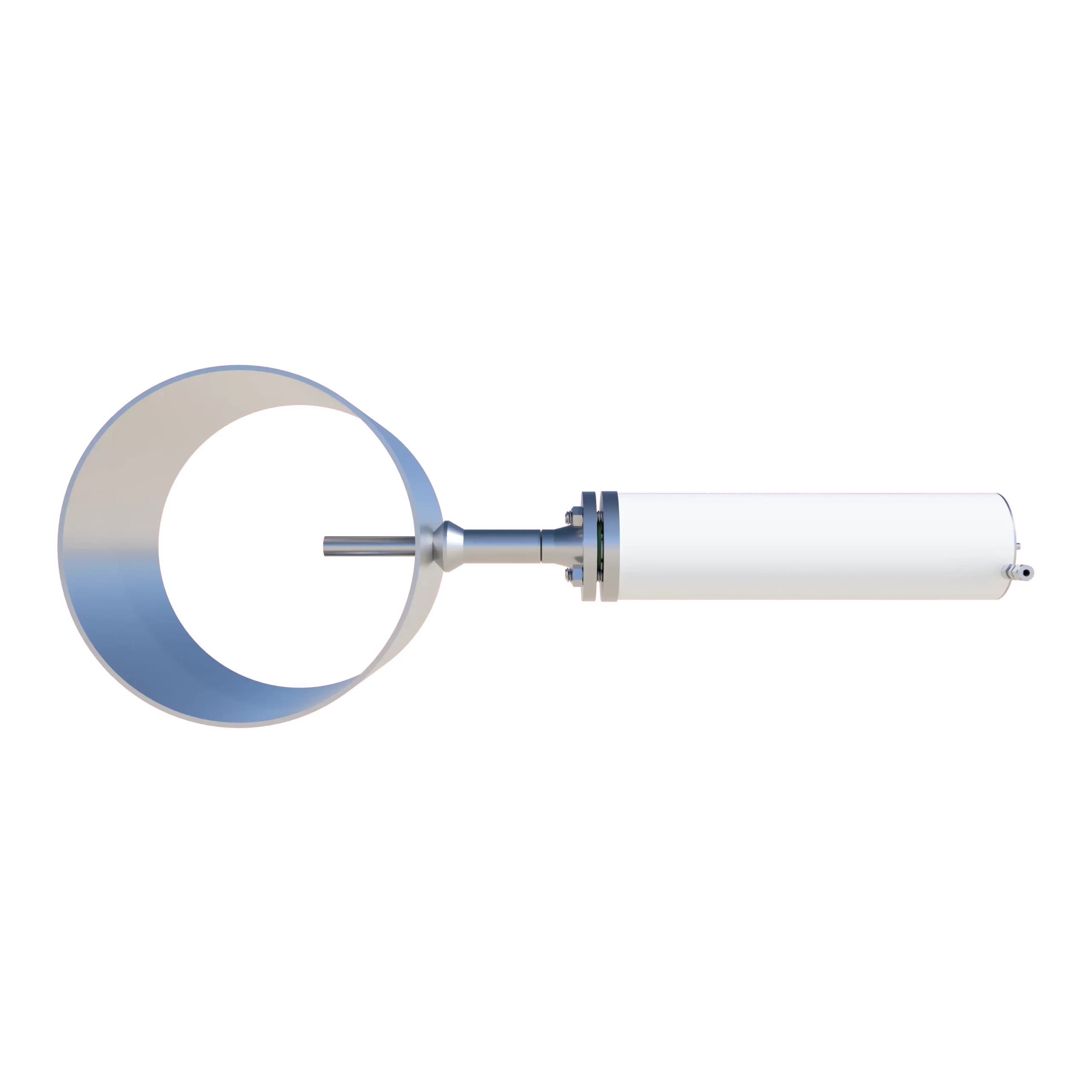
Phazer Cryogenic Probe-Vaporizer model overview

Our LNG solutions are tested under process conditions
ASaP is actively participating in (re)writing LNG and other International Standards. Therefore, the need for testing is well embedded in the ASaP organization.
For the Dutch metrology institute, VSL, ASaP designed, built and tested the first and only commercially available test unit according to EN 12838: 2000. For internal tests ASaP has designed and built 2 generations of test units.
With new market developments emerging, like optical in situ measurements based on Raman and Infrared spectroscopy. ASaP’s 3rd generation test unit is able to test two identical or different devices simultaneously to determine both their uncertainty as well as the differences between two devices and/or analytical methods under identical, controlled and simulated process conditions.

Field study – LNG vaporization with LNG probe vaporizers
For the trade of Liquefied Natural Gas (LNG) the price is based upon the energy content in the LNG1. The accuracy of the energy content determination is therefore of the utmost importance. Small differences in the measured concentrations are multiplied by the volume of the transfer and could be of significant value. In this article we will discuss the common pitfalls in LNG vaporization and sampling for analysis as introduction in the subject. This LNG vaporizer field study is based upon the experimental comparison of two vaporizing probes in a true field situation.

Sampling LNG has more than a few challenges, among the most important are pre-vaporization and partial vaporization. Both of these challenges are closely connected to the cryogenic nature of the sample. Described in ISO 8943:20072, the sampled LNG needs to be in a liquid sub-cooled state, that is at a lower temperature than the boiling point at that pressure. The risk is that due to the very low boiling point of the LNG any heat transfer into the system can readily cause vaporization.

LNG is a mixture of components therefore we do not have a precise boiling point. Figure 1 depicts a schematic representation of a bubble point curve for a two components mixture. The bubble point curve of a mixture shows the temperature at which the liquid starts to boil. Consequently, the components vapor pressures determine the concentration ratios in the gas relative to the liquid. Based upon this principle is fractional distillation3. In the field this could happen in case a sample line is poorly isolated, and the liquid is heated to the bubble point curve and vaporized. This temperature is also represented on the dew point curve, which means the vapor could condense in a different composition depending on the LNG vapor pressures. For LNG we would expect higher methane readings in the gas than in the liquid, for the vapor pressure of methane>ethane>propane4–6.
The heat causing the LNG to pre-vaporize could come from the vaporizer upstream that heats up the tubing, poor isolation, or excess ambient heat. The heat influx is not necessarily enough to fully vaporize the LNG, which would result in any variation of two phase flow7–9 and an inhomogeneous sample. In my experience heat influx is mainly caused by bad isolation on a sample line, easily recognized by ice formation10. This phenomenon influences both the composition and the homogeneity of the sample. One of the solutions provided to address this problem is LNG vaporization with a probe vaporizer setup. These kinds of vaporizers are directly connected to the LNG sample probes which is installed in the subcooled process liquid. An example is shown in Figure 2, noticeably there is no sample line for the liquid reducing the opportunity for pre-vaporization.
Partial vaporization takes place inside the vaporizer and has the same effect as pre-vaporization. Incomplete boiling generates a gas with a different composition than the liquid. This could be caused by a bad vaporizer design, insufficient heat capacity, dead volume, or incorrect flow settings. During the vaporization of methane, the volume expands by a factor 232 (1.013 barg at boiling point), if then immediately heated to 288K it expands by a factor 621. Pressure regulators reduce the flow depending on the output pressure. The increase in volume creates pressure that could stop the flow in the vaporizing pressure regulator, this situation maintains partial vaporization and heat flux upstream.
The analytical result of pre- and partial vaporization is a loss in sample homogeneity and representability, expressed as precision and accuracy respectively. The influence on the composition would lead to an increased measured concentration of components with a higher vapor pressure, and a decreased measured concentration of components with a lower vapor pressure. Lastly the calculated results, such as the Gross Heating Value (GHV), would change with the composition. GHV would decrease in a system where pre- or partial vaporization is present.
Field study experimental details
In this field study of LNG vaporizers two commercially available LNG sample probe systems are compared based on the direct analysis data. For an effective comparison the vaporizers are the only variables in the sampling system. Both systems use the same accumulators, sample lines after vaporization, and the same Gas Chromatograph (GC). In Figure 3 the used installation is shown, both LNG vaporizers with probe were installed on the same impact probe on the LNG-transfer line.

The experiment tests the stability of the systems during operation. All valves were fixed in position to prevent any interference. Unfortunately, not all data could be used due to commissioning works. Four datasets were selected, 2 for each sampler, and combined assuming the sample to be a constant factor. The data is plotted for visual inspection, also normality, means, and deviation were calculated.
The data for the field study of the LNG sample probes was collected during a real LNG ship-to-ship transfer in the port of Dubai. Data was only used on condition no works were being executed, parcel was loading, and cooling down was finished. Data for measured components Carbondioxide, iButane, nButane, NeoPentane, iPentane, nPentene, and Hexane were negligible. This data was computed but did not render significant results due to the low concentrations and were therefore omitted. The GHV was computed by the GC, the influence of these components on the GHV is included in the results.
LNG probe vaporizers Field study results and discussion
Figure 4 to Figure 7 show the plotted results of the stability runs for both systems for methane, ethane, propane and the GHV. Optical inspection reveals the signal is more ‘calm’ for the system 1 compared to system 2. The greater difference between consecutive measurements can be expressed as the line length. In system 2 the signal line length is 4.2, 4.1, 1.6, 0.7, and 3.8 times longer for methane, ethane, propane, nitrogen, and the GHV respectively. Another visual indicator is the reported concentration ranges, (highest – lowest) which are greater for system 2.
 |  |
 |  |
 |  |
 |  |
Normality testing was done with a Lilliefors test since the true mean (µ) and deviation (σ) were unknown11. The results are displayed in Table 1. The data found using system 2 was found to be not normally distributed on the majority of measured parameters. It was decided to continue with the data assuming non-normality for all datasets. A normal distribution is expected to be found in the datasets by virtue of the following arguments: the sample should be homogeneous; fully mixed and of constant quality. The systematic error in the GC is normally distributed and in theory it should be possible to find this distribution in the data. With both systems non-normally distributed results are found, although system 1 performs better on methane and ethane.
The consequence of non-normal distributions is that the standard deviation (s) and mean () cannot be compared with the use of parametric statistics such as: F-, Chi-, or T-tests. Though they can be compared with the use of non-parametric statistics with less statistical power. In this experiment the means were compared with the use of a Wilcoxon sign rank test12, and variance with the use of Levene’s robust test for equality of variances13. These data is shown in Table 2.
| System 1 | System 2 | |||
| Dataset 1 (n=52) | Dataset 2 (n=47) | Dataset 1 (n=47) | Dataset 2 (n=52) | |
| Methane | Normal | Normal | Not normal | Not normal |
| Ethane | Normal | Normal | Not normal | Not normal |
| Propane | Not normal | Normal | Not normal | Not normal |
| Nitrogen | Not normal | Not normal | Not normal | Normal |
| Gross Heating Value | Normal | Not normal | Not normal | Not normal |
| System 1 (n=99) | System 2 (n=99) | Means compared | Variance compared | |||
| Mean of measurements | Mean absolute deviation | Mean of measurements | Mean absolute deviation | Wilcoxon α=0.05 | Levene’s α=0.05 | |
| Methane (mol%) | 93.476 | 0.046 | 93.500 | 0.089 | Different | Different |
| Ethane (mol%) | 6.315 | 0.053 | 6.287 | 0.093 | Different | Different |
| Propane (mol%) | 0.0124 | 0.0002 | 0.0115 | 0.0003 | Different | Equal |
| Nitrogen (mol%) | 0.197 | 0.0108 | 0.202 | 0.0161 | Different | Different |
| Gross Heating Value (MJ/nM3) | 39.520 | 0.018 | 39.509 | 0.029 | Different | Different |
In Table 2 the average measured concentrations on both systems is shown. When compared in a Wilcoxon test these means are found to be significantly different from each other. It thus makes sense to note the reported value of ethane, propane, and the GHV is higher on system 1, whereas methane and nitrogen have a higher value on system 2.
The precision of the mean, expressed as the mean absolute deviation, is also shown in Table 2. The Levene’s test reveals that for methane, ethane, nitrogen, and the GHV the deviation is significantly different. The concentration measurement for propane is not found to be significantly different. It can be said that measurements done on system 1 are equally or more precise than those on system 2.
When these results of the LNG sample probes are compared with our expectations about the influence of partial vaporization on the analysis results we find the following. On system 2 higher concentrations of lighter components are found, nitrogen and methane, accompanied with a lower GHV. Also a higher deviation compared to system 1 and non-normal distributions can be found in the data. These might be indications that partial LNG vaporization is occurring in system 2.
Other reasons for differences in the mean can be found in the assumption the sample quality is equally distributed over the complete loading. It is likely all liquid hydrocarbons are fully mixed with each other, though the immense volume of an LNG-cargo ship might have some adverse and unforeseen effects. Process flow and temperature, ambient temperature, front or back position in the process bypass, or whether it rains or not might have an influence on the performance of the systems. To be able to compare the data as matched pairs the measurements should be done at the same time while continuously changing between the systems. At the time of the experiment this was impossible, in the future such an experimental setup could improve the data.
The main issue with this comparison is that we can only indicate for one of the systems whether or not partial evaporation might be happening. There is no reference material to which we can measure the functionality of the better system. To test these setups independent from each other a testing facility is needed, as described in the NEN-EN 12838 standard14. Such testing facility is currently being built in the Netherlands for research purposes. At this test site the LNG vaporizers will all be measured against a common denominator.
Field study – LNG vaporization with LNG probe vaporizers references
- (1) Groupe International des Importateurs de Gaz Naturel Liquéfié. GIIGNL LNG Custody Transfer handbook, the 6th edition of May 2021.
- (2) Normcommissie 310 066 “Debiet- en hoeveelheidsmeting.” NEN-ISO 8943:2007;.
- (3) Atkins, P.; Jones, L. Chemical Principles; W. H. Freeman, 2008.
- (4) Air Liquide. Methane Vapor Pressure https://encyclopedia.airliquide.com/images_encyclopedie/VaporPressureGraph/Methane_Vapor_Pressure.GIF (accessed Apr 20, 2016).
- (5) Air Liquide. Ethane Vapor Pressure https://encyclopedia.airliquide.com/images_encyclopedie/VaporPressureGraph/Ethane_Vapor_Pressure.GIF (accessed Apr 20, 2016).
- (6) Air Liquide. Propane Vapor Pressure https://encyclopedia.airliquide.com/images_encyclopedie/VaporPressureGraph/Propane_Vapor_Pressure.GIF (accessed Apr 20, 2016).
- (7) Openmodelica. Two phase flow @ build.openmodelica.org https://build.openmodelica.org/Documentation/Modelica.Fluid.Dissipation.PressureLoss.StraightPipe.dp_twoPhaseOverall_DP.html (accessed Apr 21, 2016).
- (8) Technifab. Cryogenic Liquid Flow @ technifab.com https://technifab.com/cryogenic-resource-library/cryogenic-thermodynamics/cryogenic-liquid-flow/ (accessed Apr 21, 2016).
- (9) Filina, N. N.; Weisend, J. G. Cryogenic Two-Phase Flow: Applications to Large Scale Systems; Cambridge university press, 1996.
- (10) Visser, H.-P. LNG sample take-off, vaporization and sampling, 2014, 23.
- (11) Lilliefors, H. W. J. Am. Stat. Assoc. 1967, 62 (318), 399–402.
- (12) Hollander, M.; Wolfe, D. A.; Chicken, E. Nonparametric statistical methods; John Wiley & Sons, 2013.
- (13) Levene, H. Contrib. to Probab. Stat. Essays Honor Harold Hotell. 1960, 2, 278–292.
- (14) Technical Committee CEN/TC 282. NEN-EN 12838:2000 Installations and equipment for liquefied natural gas – Suitability testing of LNG sampling systems; 2000.
ASaP LNG vaporization products
ASaP is widely recognized as a leader in LNG terminal expertise, with a strong reputation built on extensive knowledge and experience. We focus on engineering and manufacturing high-quality solutions, including LNG Custody Transfer (CTMS), LNG Probe-Vaporizers, advanced LNG Samplers, and natural gas analysis. We provide complete “pipe to byte” analytical systems, from sample take-off to your DCS and maintenance systems.
Contact our LNG vaporization specialist today
For personalized assistance and further LNG vaporization inquiries, please contact our specialist at ASaP. We are here to help and provide the support you need.
Contact our LNG vaporization specialist directly
You can contact us is you have a question about LNG vaporization when it suits you. See our specialist’s contact information below.
Hans-Peter Visser

International Sales
Let our LNG vaporization specialist contact you
Let us know how we can reach you to discuss LNG vaporization. We will only use this information for contacting you.



